
Manila Philippines Photo Travelogue cover page. |

Map of the Philippines with the star indicating Manila. |

Entrance to the Manila American Cemetery and Memorial. |
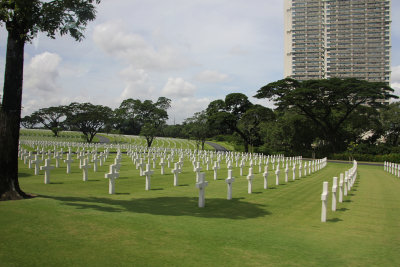
It contains the largest number of graves of U.S. military dead of World War II. The total is 17,201. |
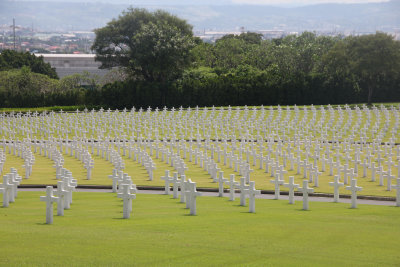
The cemetery comprises 152 acres. |
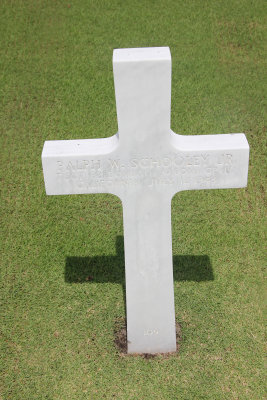
Close-up of one of the thousands of crosses. |
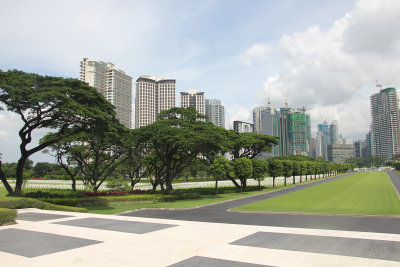
Manila high rises in the background. |

While the cemetery is sacred ground, construction nearby has boomed. |

Trees with graves in the background. |

More crosses lined up with trees in the background. |
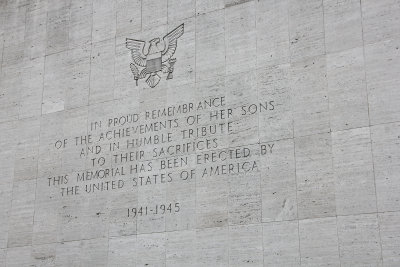
Most of those who are buried here died in operations in New Guinea and the Philippines. |
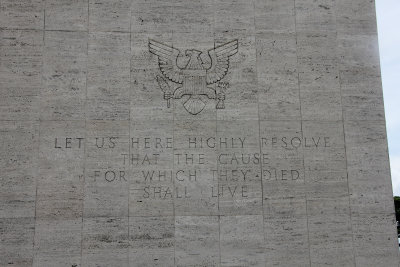
Close-up of a memorial plaque. |

Ahead, is the memorial plaza, which contains two large hemicycles. |
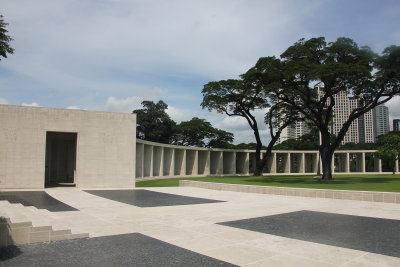
Closer view of an entrance to one of the hemicycles at the memorial plaza. |

The hemicycles contain 25 mosaic maps that recall the achievements of American armed forces in the Pacific, China and India. |

Names of the dead are listed on pillars at the cemetery. |
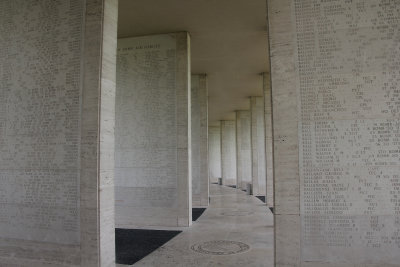
Inscribed on the columns are tablets of the names of the 36,285 missing. |

Rosettes mark the names of those since recovered and identified. |
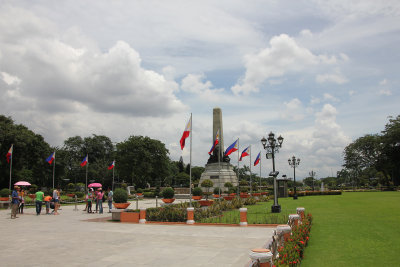
Entrance to Rizal Park, an historical urban park located in the heart of Manila. |

A map of Rizal Park. |
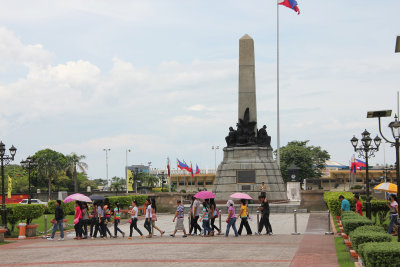
The execution of pacifist Dr. José Rizal on December 30, 1896, sparked the Philippine Revolution against the Spanish colonizers. |
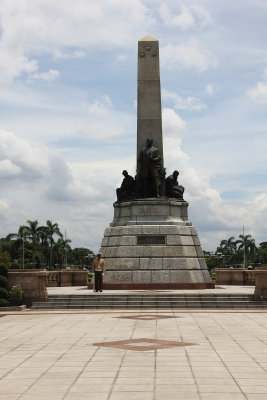
View of the Rizal Monument. Dr. José Rizal became a martyr and a national hero of the country. |
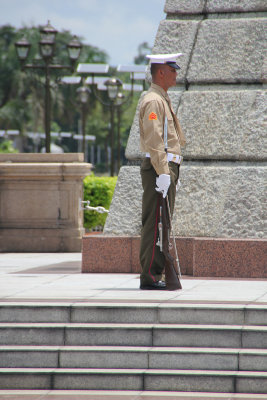
A soldier guarding the Rizal Monument. |
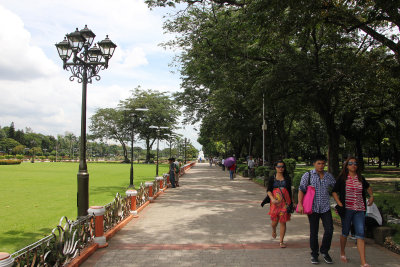
Rizal Park (also known as Luneta Park or colloquially Luneta) is adjacent to the old walled city of Manila, now Intramuros. |

Since the Spanish colonial era, Rizal Park has been the favorite spot for locals to take in the beautiful surroundings. |
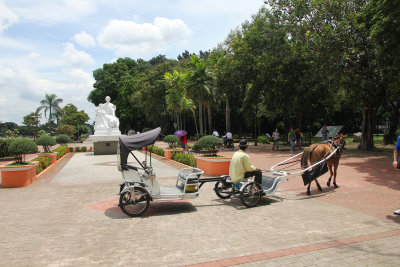
It is also a favorite destination for tourists. |
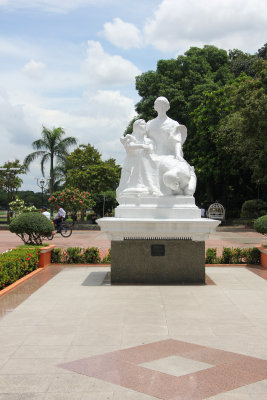
Statue in Rizal Park entitled "La Madre Filipina." |
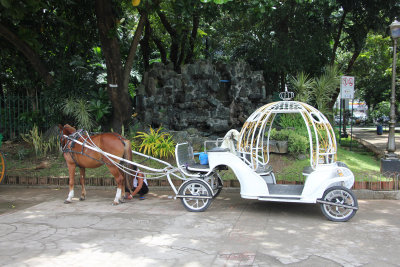
One of several types of buggies available for hire at the park. |
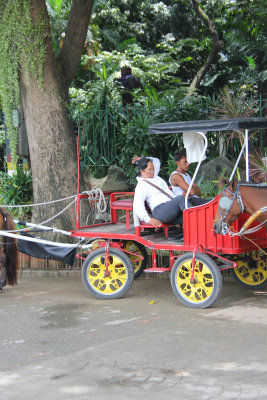
Another buggy for hire. Business looked slow that day. |
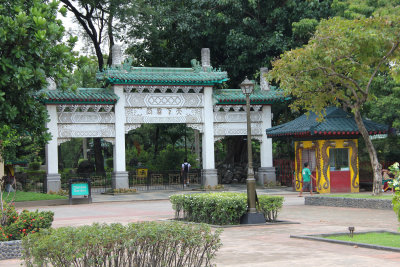
Another entrance to Rizal Park. |

A ticket booth with dragons. Note the sign that says, "Comfort Room Inside." |

Filipinos getting their afternoon exercise in the park. |

Entrance sign for Fort Santiago, a citadel first built by Spanish conquistador, Miguel López de Legazpi. |
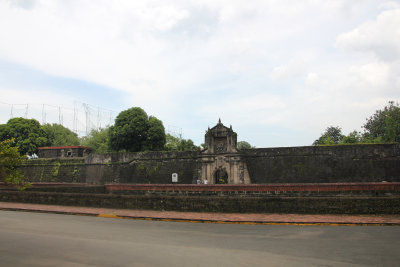
The defense fortress is part of the structures of the walled city of Manila referred to as Intramuros ("within the walls"). |
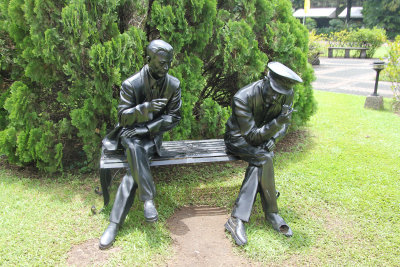
A life-like sculpture at Fort Santiago. |

A birdhouse at the fort. |
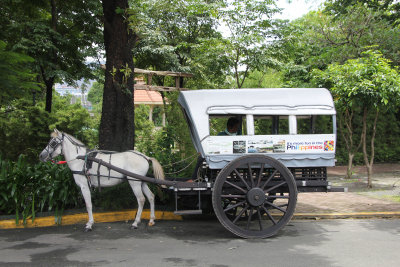
A horse and buggy for tourists. |

Sign for the Rajah Sulayman Theater at Fort Santiago. |
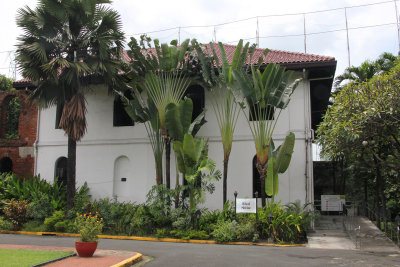
Rajah Sulayman was the Muslim Rajah of Maynila, who resisted Spanish sovereignty. |
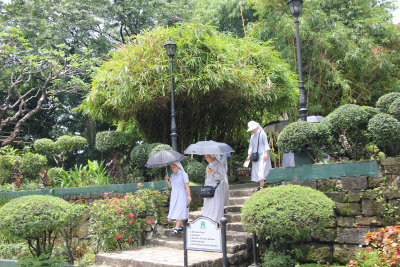
Nuns at Fort Santiago. It was drizzling rain that day. |
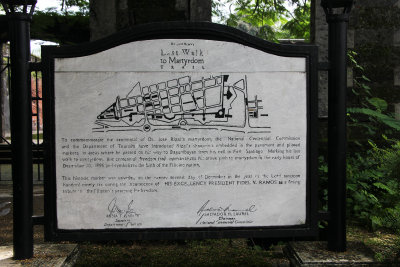
Sign for the "Last Walk to Martyrdom" for pacifist Dr. José Rizal who was executed on December 30, 1896. |
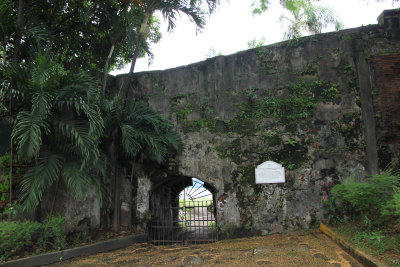
Fort Santiago gate where the occupants passed through to get to the Passig River. |
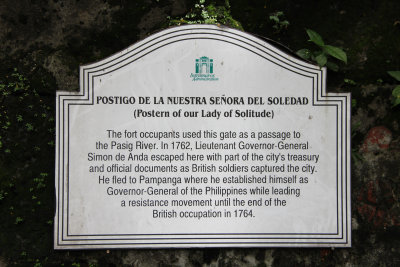
Sign describing how Lieutenant-Governor General Simon de Anda escaped from British soldiers through the gate in 1762. |

Close-up of the gate referred to as the "Postern of Our Lady of Solitude." |
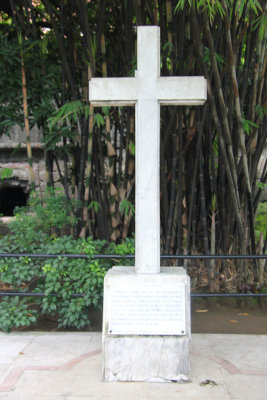
Memorial cross to Filipinos and Americans who died in the dungeon as victims of the Japanese during WWII. |
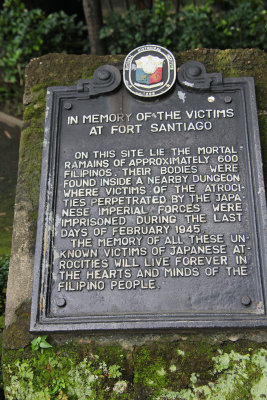
Sign describing the ordeals of victims of the Japanese at Fort Santiago. |
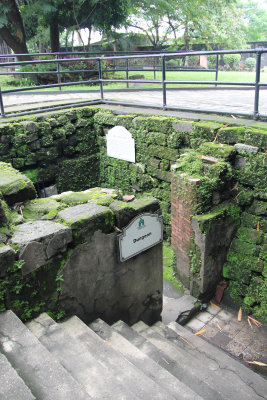
Steps leading to the dungeon. |
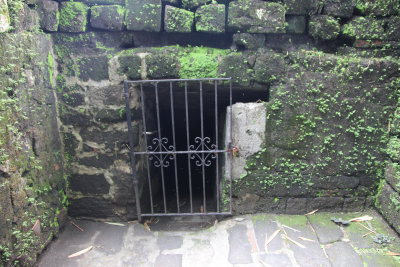
Gates of the dungeon where approximately 600 Filipinos died. |

Another dungeon entrance. |
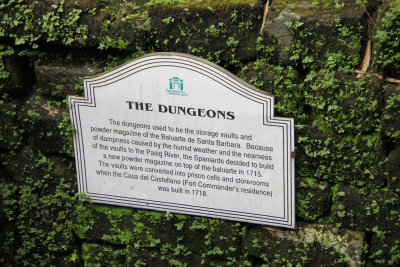
Sign describing how the Spanish originally used the dungeons as storage vaults for gun powder. |
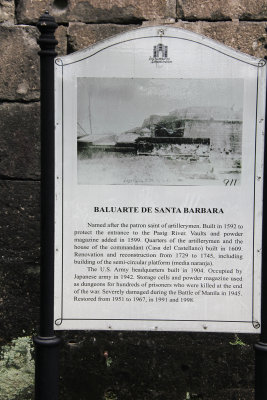
Another sign for la Baluarte de Santiago, which was was built in 1592 to protect the Pasig River. |
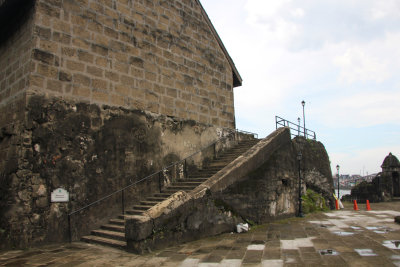
Side view with steps of la Baluarte de Santiago. |
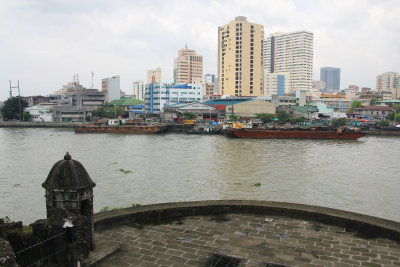
The Pasig River as seen from la Baluarte de Santiago. |
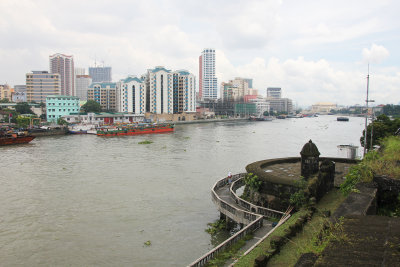
Manila high rises across the Pasig River. |
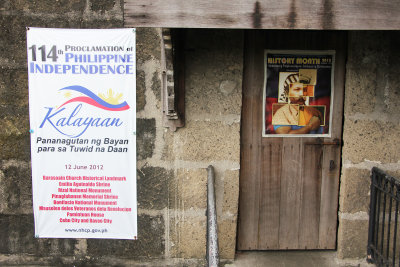
Sign for the 114th Proclamation of Philippine Independence. |

Passageway from la Baluarte de Santiago to the Pasig River. |

Close-up of the passageway. |
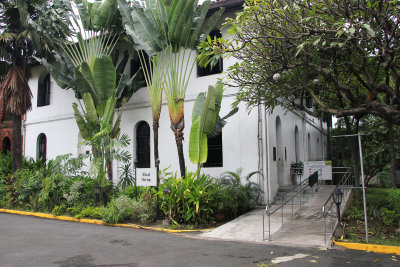
As I was leaving Fort Santiago, I passed by the Rizal Shrine. |

Sign at the Rizal Shrine describing the restoration of Dr. José Rizal's cell. |
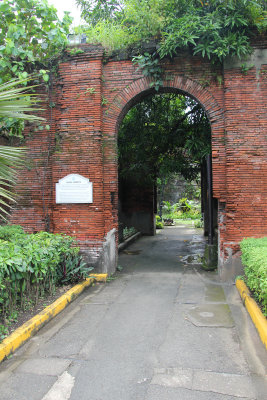
Brick ruins at Fort Santiago, which are part of barracks for Spanish soldiers that were built in 1593. |
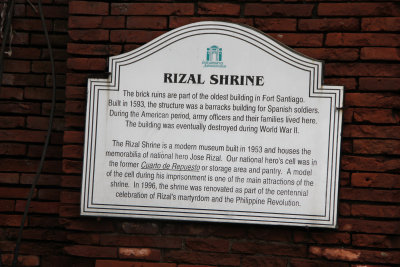
Sign describing the ruins and that the Rizal Shrine is a museum built in 1953. |

Pathway, wall and gardens at the Rizal Shrine. |
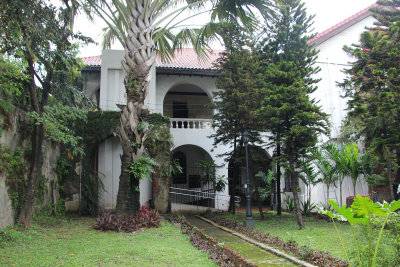
Building that is part of the Rizal Shrine. |

Sign for the Baluarte de San Miguel, which is one of two fortifications guarding the bridge entering Fort Santiago. |
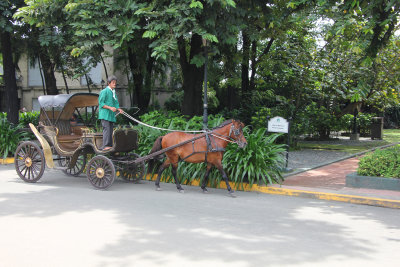
Horse and buggy at Plaza Armas at Fort Santiago. |
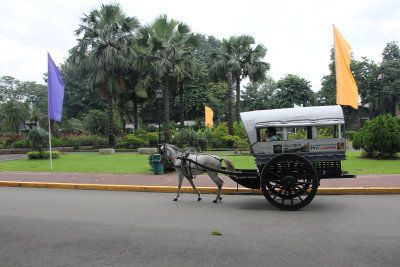
A tourist buggy going by. |
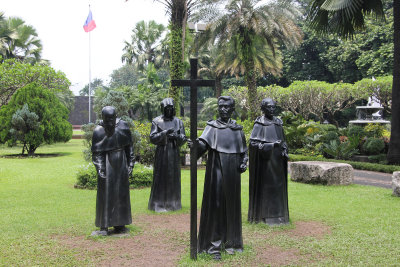
Monk statues at Plaza Armas. |
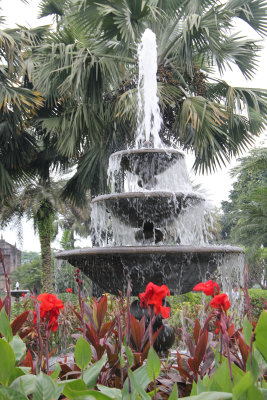
Plaza Armas fountain with flowers in the foreground. |
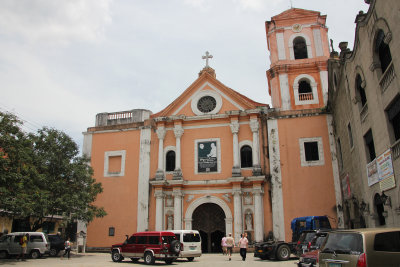
My next stop was to San Agustin Church, founded in 1571. It is the oldest stone church (built in 1589) in the Philippines. |

The ornately carved main door of San Agustin Church. It is one of only 4 Baroque churches in the Philippines. |
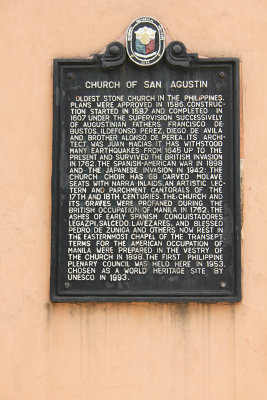
Sign describing the history of the church. It was chosen a UNESCO World Heritage site in 1972. |

Interior of San Augustin Church. The church interior is in the form of a Latin cross. |

Details of the ornate Baroque ceiling and chandeliers. I got yelled at since it is forbidden to take photos inside the church! |
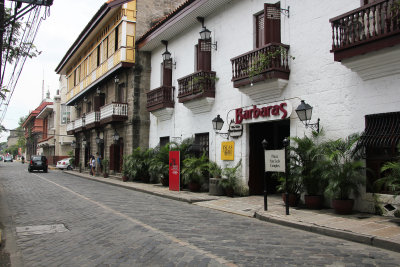
Quaint colonial street next to San Augustin Church. |
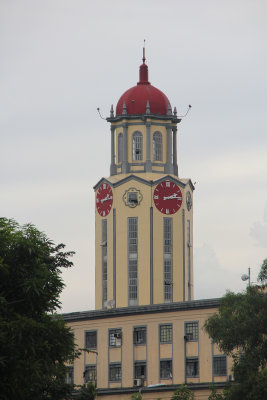
View of the distinctive clock tower of the Manila City Hall, which was designed by Antonio Toledo in the 1930s. |

Façade of the National Museum of the Philippines. It was established in 1901 as a natural history and ethnography museum. |

Depiction of the San Diego wrecksite (sunk by the Dutch in 1600 near Fortune Island, Philippines), discovered in 1992. |

Exhibit showing the archeological excavation of the Pandanan wrecksite (discovered in 1993 by pearl diver Eduardo Gordovilla). |
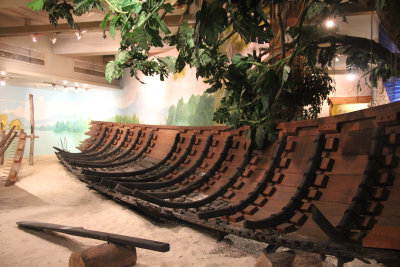
Prehistoric Butuan boat discovered in 1978. Eight boats were uncovered in the find, of which three were excavated. |
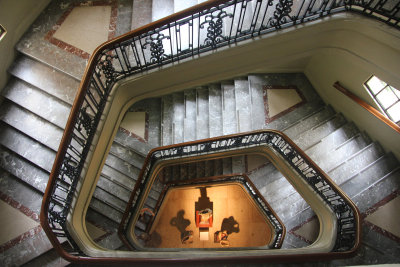
Looking down the stairwell of of the National Museum. |
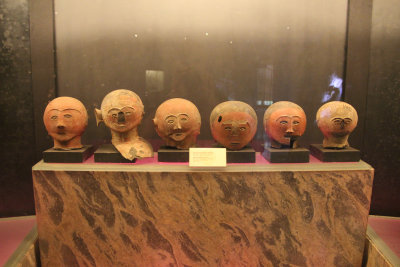
Anthropomorphic jar covers from the Ayub Cave with faces that were originally painted red and black. |

Anthropomorphic burial jar of unpainted head with perforations and partition at the center. |
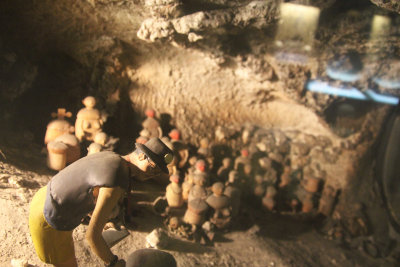
Depiction of archeologists excavating a site. |

Sculpted head and torso of the dead for ancient burial grounds. |
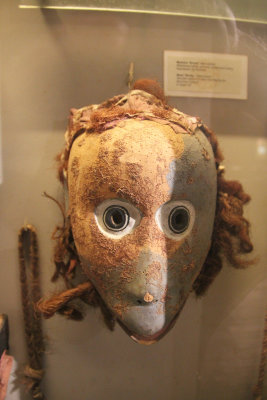
Ancient mask on display at the museum. |
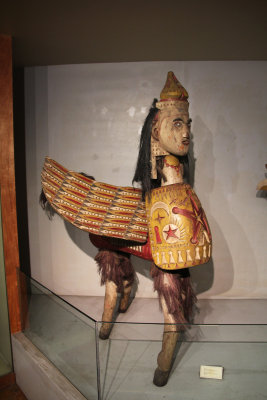
"Borak," a mythical figure with the body of a horse and the head of a man. |
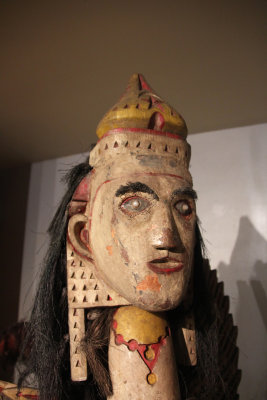
Close-up of the head of Borak. |
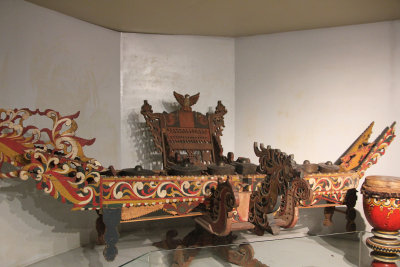
"Kulintangan," a musical instrument of the Maranao tribe in the Philippines. |

View of Marble Hall at National Museum of the Philippines. |
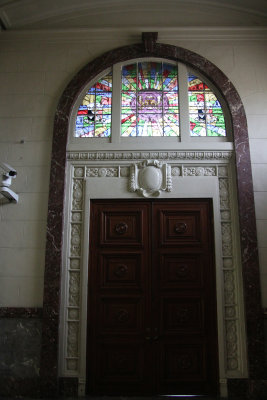
Stained glass window over the door of Marble Hall. |

Close-up of the stained glass window. The museum's main building was designed in 1918 by an American architect, Daniel Burnham. |

One of many Jeepneys in Manila, the most popular form of public transport. |
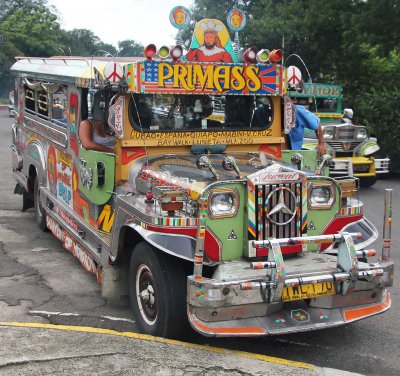
They are flamboyantly decorated. Jeepneys were originally made from U.S. military jeeps left over from World War II. |











